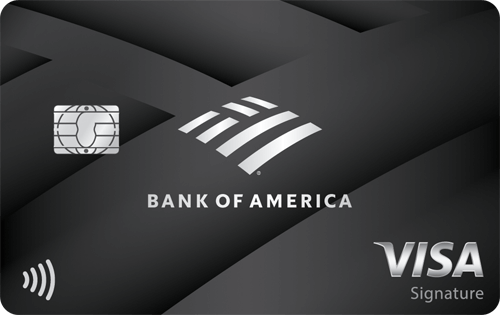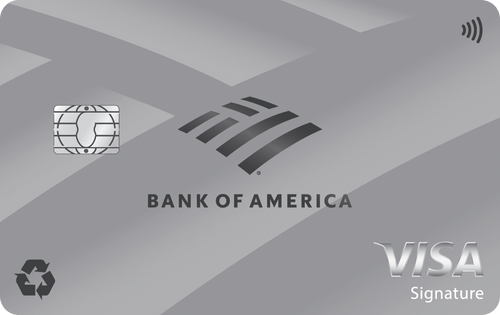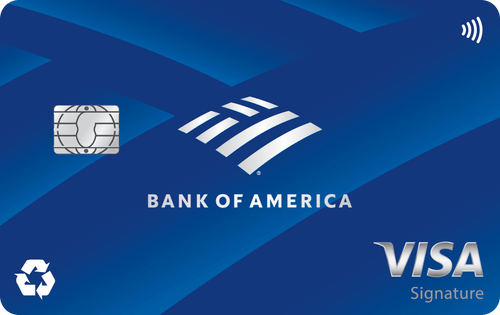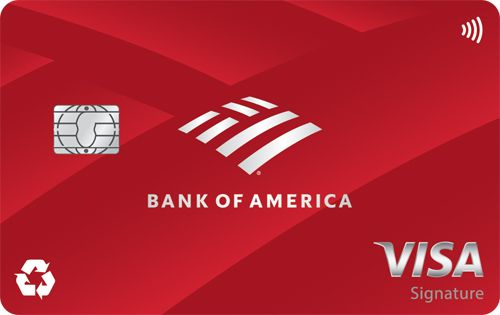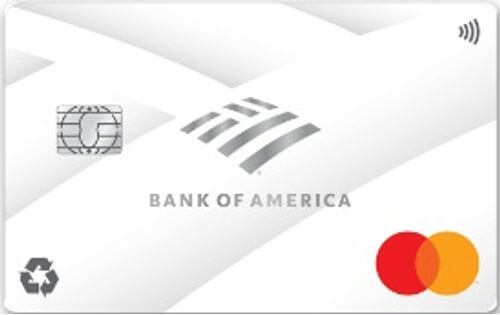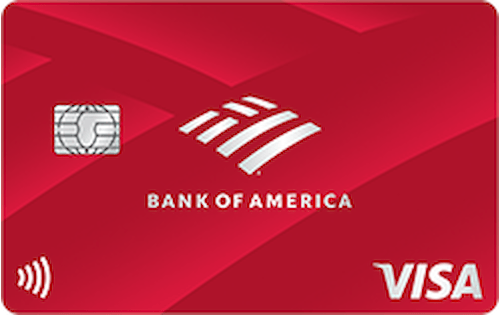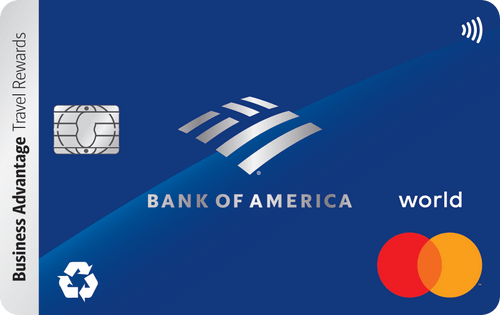- Best Bank of America credit cards comparison
- How we picked the best Bank of America credit cards
- Sources
- About the author
- User questions & answers
Best Bank of America Credit Cards Comparison
The best BofA credit card for you depends on your credit standing as well as your spending and payment habits. To help you make the right decision for your wallet, we’ll summarize our editors’ best picks by category below. If you don’t know where your credit stands, you can check your latest credit score for free right here on WalletHub.
| Credit Card | Best For | Annual Fee | Editor's Rating |
| Bank of America® Premium Rewards® credit card | Overall | $95 | 4.8/5 |
| Bank of America® Unlimited Cash Rewards credit card | Cash Back | $0 | 4.6/5 |
| BankAmericard® credit card | 0% Intro APR | $0 | 4/5 |
| Bank of America® Customized Cash Rewards Secured Credit Card | Rebuilding Credit | $0 | 4.5/5 |
| Bank of America® Travel Rewards credit card for Students | Students | $0 | 3/5 |
| Bank of America® Business Advantage Travel Rewards World Mastercard® credit card | Small Business | $0 | 3.7/5 |
How We Picked the Best Bank of America Credit Cards
WalletHub monitors the latest Bank of America credit cards, in addition to more than 1,500 other credit card offers, in order to help people find and get approved for the best credit card for their needs, whatever those needs may be. Given that many different types of people are in the market for a Bank of America credit card, our editors select the best options in a handful of popular usage categories.
In making our picks for the best Bank of America credit cards by category, we consider the terms and card features most important to the particular type of user or transaction in question. For example, when considering balance transfer credit cards, a card’s introductory balance transfer APR, balance transfer fee, regular APR and annual fee are most important. And we use those terms to calculate the expected cost of each card when used to pay down the average household credit card balance. With most rewards-based categories, on the other hand, we consider the average person’s expected net rewards earnings after two years of use, with annual fees factored in.
The particular parameters vary by category, but the bottom line is that we crunch the numbers to find you the best deal, based on two-year cost and other key WalletHub Rating components, so that you can maximize your savings with minimal effort.
How Two-Year Cost Is Calculated
Two-year cost is used to approximate the monetary value of cards for better comparison and is calculated by combining annual and monthly membership fees over two years, adding any one-time fees or other fees (like balance transfer fees), adding any interest costs, and subtracting rewards. Negative amounts indicate savings. When fees or other terms are presented as a range, we use the midpoint for scoring purposes.
Rewards bonuses and credits have been taken into account for two-year cost calculations. However, bonuses applicable to only a very small portion of cardholders are not considered. For example, credits and bonuses awarded for spending or redeeming rewards through a company portal with non-co-branded cards have not been taken into account. Similarly, bonuses and credits related to spending with specific merchants using a non-co-branded card have not been taken into account (for example, if Card A offers credits with DoorDash, this feature would not be factored into calculations because it is hard to assess how many cardholders would use the benefit or exactly how much value they'd get from it).
Cardholder Spending Profiles
Given that different users have different goals and are likely to use their credit cards differently, we identified spending profiles that are representative of different users’ financial priorities and behaviors. For each cardholder type, we have assumed a specific amount of monthly spending by purchase type (e.g., groceries, gas, etc.), as well as an average balance, balance transfer amount, amount spent on large purchases and average monthly payment. Spending assumptions are based on Bureau of Labor Statistics data for consumers and PEX data for businesses.
Sources
WalletHub actively maintains a database of 1,500+ credit card offers, from which we select the best Bank of America credit cards for different applicants as well as derive market-wide takeaways and trends. The underlying data is compiled from credit card company websites or provided directly by the credit card issuers. We also leverage data from the Bureau of Labor Statistics to develop cardholder profiles, used to estimate cards’ potential savings.
